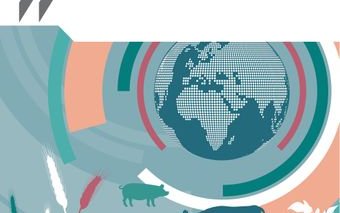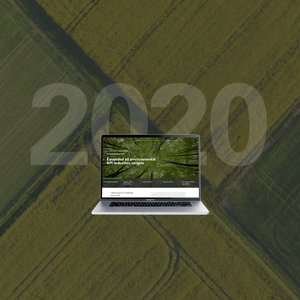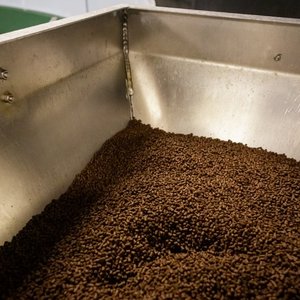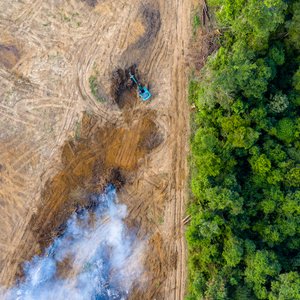With less than 10 years until the 2030 deadline for achieving the UN Sustainable Development Goals (SDGs), governments need to step up their efforts to meet global food security and environmental targets, according to a new report released today by the Food and Agricultural Organization of the United Nations (FAO) and the Organisation for Economic Co-operation and Development (OECD).
Although progress towards the SDGs is expected to be made in the coming decade - assuming a fast recovery from the global COVID-19 pandemic, and stable weather conditions and policy environments - the past year of disruptions from COVID-19 has moved the world further away from achieving the SDGs. This calls for urgent attention to the factors and forces driving performance in agri-food systems.
The OECD-FAO Agricultural Outlook 2021-2030 provides policy-makers with a consensus assessment of the ten-year prospects for 40 main farm and fisheries products at regional, national and global levels, analyzing the drivers of performance in the agri-food markets and helping to inform forward-looking policy analysis and planning. The Outlook baseline projections describe expected trends based on existing policies, highlighting areas where additional effort is needed to meet the SDGs.
Ensuring food security and healthy diets for a growing global population will remain a challenge. Global demand for agricultural commodities - including use as food, feed, fuel and industrial inputs - is projected to grow at 1.2% per year over the coming decade, albeit at a slower annual rate than during the previous decade. Demographic trends, the substitution of poultry for red meat in rich and many middle-income nations, and a boom in per capita dairy consumption in South Asia are expected to shape future demand.
Slow growth in aquaculture expected
According to the report, global fish production is projected to grow at 1.2% p.a. to 201 Mt by 2030, a relative slowdown compared to the 2.1% p.a. growth of the previous decade. The growth in fish production is primarily driven by continuing but slower progression in aquaculture production. This reflects the higher initial level of aquaculture production and the result of policies to reduce its environmental impacts in China.
Aquaculture production is expected to reach 103 million tons by 2030 (+2% p.a.), while capture fisheries production is projected to total 97 million tons in 2030 (+0.4% p.a.). Aquaculture production is expected to overtake capture fisheries production in 2027 and to account for 52% of all fish production by 2030. Fish production is projected to expand in all continents, with most of the growth occurring in Asia. With a projected annual growth of 1.4% p.a., the region is projected to experience the strongest growth in fish production between 2021 and 2030. Asia will consolidate its position as the main producing region, accounting for 88% of global aquaculture production and 71% of global fish production by 2030. Africa is projected to experience the second-fastest growth in production, at 1.2% p.a. over the outlook period. Capture fisheries production will remain dominant in Africa but aquaculture production will expand strongly. America, Europe and Oceania, are all expected to experience growth rates under 1% p.a. by 2030. These slower growth rates reflect modest growth in capture fisheries production and the lower contribution of aquaculture to total fish production in these continents.
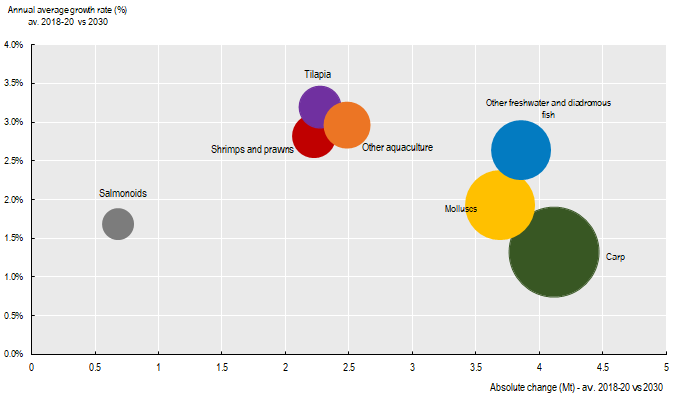
Source: OECD/FAO (2021), ''OECD-FAO Agricultural Outlook OECD Agriculture statistics (database)'', http://dx.doi.org/10.1787/agr-outl-data-en.


